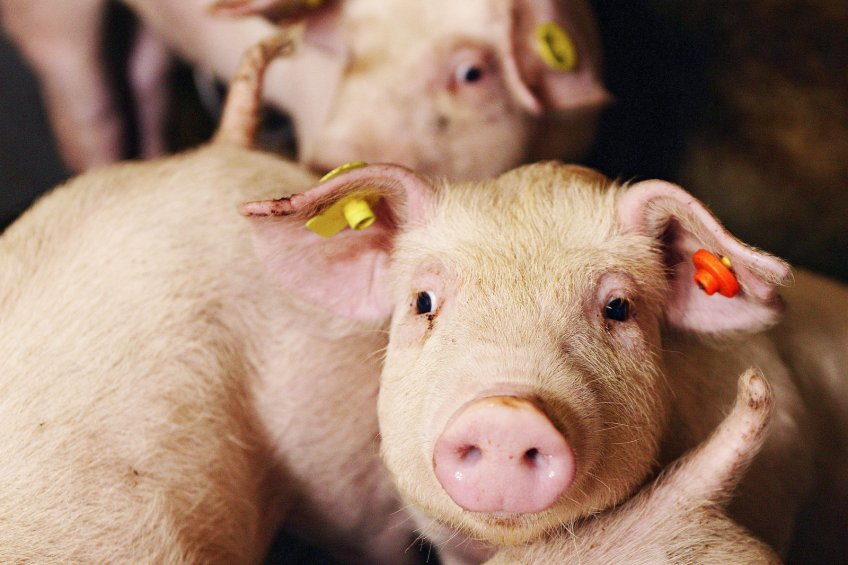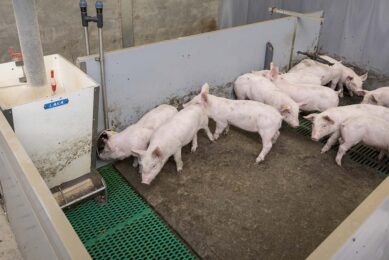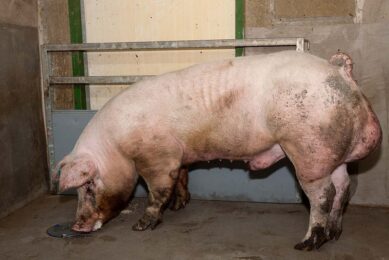Profitable pig farming without using AGPs

The risk of antimicrobial resistance is playing a greater role in swine producers’ decisions when considering what to give piglets and finishers. Feed and water additives are increasingly available and have been shown to effectively replace AGPs all over the world.
It has been over 70 years since antibiotics were first discovered to increase the growth rate of swine, and the use of antibiotic growth promoters (AGPs) became widespread during the industrialisation of swine farming in the 1950s. For a time, AGPs seemed the perfect solution to transform feed into meat in the most efficient way. They are effective in pigs of all growth stages, but particularly so when the pigs are young, with a 6.9% improvement in feed conversion ratio (FCR) between 7-25 kg. Under hygienic conditions, the effect of AGPs is limited to only a 2.2% improvement in FCR in the grower-finisher phase (24-89 kg). Greater effects are seen under suboptimal conditions.
In parts of the world where AGPs are common, livestock producers are often reluctant to discontinue their use due to the perceived risk of disease and lower productivity. However, recent Selko trials of feed additives with swine in China and North America show an even bigger improvement in FCR compared to AGPs: nearly 13% in piglets and about 4% in growers and finishers.
Figure 1 – Adding an additive* to the drinking water of weaned piglets on reduced medication increases bodyweight by 1 kg after a 4-week growth period, compared to piglets on full medication and no additive.

In contrast to many livestock producers’ expectations, using feed additives as part of good farm management may therefore offer a better strategy for keeping their pigs healthy and profitable than continued use of AGPs.
Dangers and scale of antimicrobial resistance
The European Union (EU) banned AGPs in 2006. Nevertheless, preventive usage of antibiotics is still allowed in the majority of countries outside the EU. Unlike single antibiotics used solely for therapeutic purposes, most AGPs are broad-spectrum drugs that lead to antimicrobial resistance on a correspondingly broader scale. In a recent global study, the rate of ‘inappropriate use’ of antibiotics was shown to be 25% in humans, and 50% in animals. In China, which was already the biggest consumer of antibiotics in 2010, most antibiotics are AGPs, and the country’s usage of antibiotics is expected to double by 2030.
Restricting the use of AGPs
Some governments and retailers attempt to restrict the use of AGPs due to health threats and because of public concern. There’s good reason for this, as antimicrobial resistance in animals is related to resistance in humans. It is estimated that by 2050, more people will die worldwide from diseases that can no longer be treated effectively by antibiotics, than from cancer.
In addition, antimicrobial resistance is increasingly responsible for poor performance. Improvements in genetics, housing, management and feed formulation don’t achieve their maximum effect due to antimicrobial resistance. Also, some diseased animals cannot be treated properly any more because therapeutic antibiotics no longer work. One of the most commonly used AGPs for piglets is actually a critically important antibiotic for humans. In several countries, this particular antibiotic is used as the treatment of last resort when other drugs have failed, so it’s vital that patients do not develop antimicrobial resistance.
Weaning without AGPs
Especially for a heavily populated country like China, antimicrobial resistance is a potential threat, so consumers and politicians are naturally very concerned. The results of recent trials in this and other regions serve to show that there are economically valid alternatives to the use of AGPs at all stages of a pig’s life.
Functional feed additives have been proven to play an important role in minimising the use of AGPs, in combination with good farm and health management. The two products described in this article are used in drinking water and feed, and are shown to increase body weight and decrease the feed conversion ratio. These effects are attributed to positive effects on the gut microbiota balance, the gut mucosal barrier and the immunity of the animal. All of this contributes to a healthy animal with good performance within an AGP-free production system.
Australian study
In an Australian study, weaned piglets receiving a synergistic blend of free organic acids (Selko-pH) in their drinking water performed better when the number of AGPs they were given was reduced. The animals given two AGPs and no additives performed worst, those given two AGPs and the additives did better, and the group given only one AGP plus the additives far outperformed the rest. Compared to the group performing worst, the piglets on two AGPs and the additives had a 10 g higher daily gain and a 0.3 kg higher final weight, while the piglets on only one AGP and the additives put on an average of 40 g more per day, resulting in a 1 kg higher final weight and a 0.3 lower FCR after four weeks.
Chinese study
In addition, in a Chinese study with weanling pigs, piglets that were given a blend of organic acids, butyrates, specific medium-chain fatty acids and other natural compounds (Selko Presan-FX) grew 30 g more per day in the first week after weaning than those given AGPs. This resulted in an extra 800 g per piglet at four weeks after weaning. Weaning is a very stressful period for piglets and this has a clear impact on gut health, often resulting in diarrhoea around two weeks after weaning. Use of the feed additives also significantly improved the piglets’ faecal consistency, showing that these young animals can grow healthily in their first three weeks after weaning without using AGPs.
A holistic approach for finisher pigs
As the biggest volume of antibiotics in swine is used as AGP in finisher pigs, the question arises whether good results could be obtained in animals of this age too, even under better living conditions. For this reason, a trial was held in North America to compare the beneficial effects of using an AGP or a feed additive. The finisher pigs given the same type of additive as in the aforementioned trial in China, showed a significant improvement in FCR, resulting in a significant saving of nearly US$4 per pig. As feed is the highest cost in growing finisher pigs, this is economically very interesting.
Implementing good farm management, combined with using additives in drinking water and feed is important. Where housing and management are still basic, greater results from this approach can be expected. However, this strategy also clearly improved performance in finisher pigs, under hygienic conditions in North America.
The next question was whether a widely used and cheap ionophore – salinomycine – could be replaced by a feed additive without losing profitability. Another trial on finishing pigs was held in North America to investigate this. The result: the feed additive reduced the FCR by two points, at a similar overall cost per kg of gain.
Stop using AGPs without losing money
It is possible to stop using AGPs without losing money. By giving additives through water and feed, rather than giving AGPs, swine producers can actually make more money, while reducing the risk of contributing to antimicrobial resistance.
Join 18,000+ subscribers
Subscribe to our newsletter to stay updated about all the need-to-know content in the pigsector, three times a week. Beheer
Beheer










 WP Admin
WP Admin  Bewerk bericht
Bewerk bericht